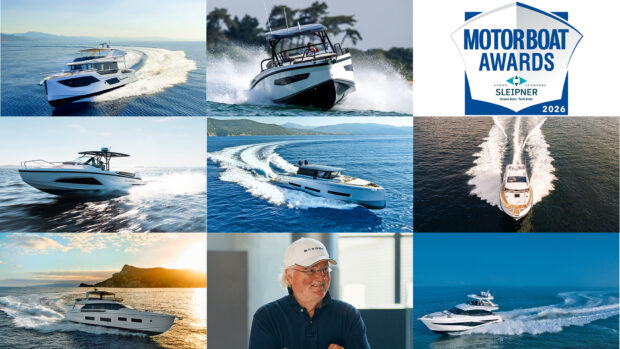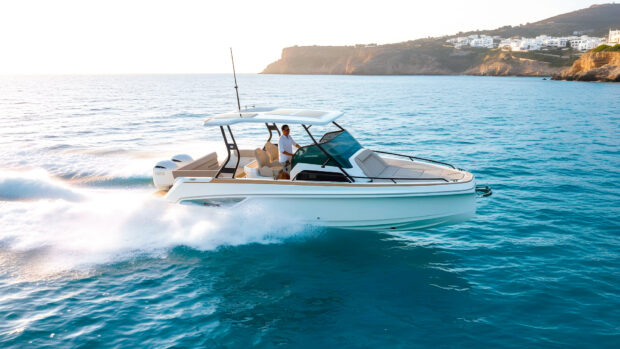verfalls are areas of broken or rougher water caused by tidal currents flowing past or over geographic features. This may be an obvious visible feature, such as a protruding headland or an invisible one such as sudden change of depth in the seabed, especially if that area coincides with a headland. Overfalls can vary dramatically depending on the strength and direction of the wind and tide.
Most overfalls are well marked and easy to see on printed charts but can be hard to spot on electronic charts, particularly on smaller screens or when zoomed out to a smaller scale. The good news is that overfalls tend to be localised to one specific area and some can be avoided altogether by detouring around them.
If you do need to navigate through them, the general principle is to look further ahead and reduce your speed to one at which you can steer around the worst parts.
Article continues below…

VIDEO: How to – Helm downwind
In this episode, we guide you through how best to trim your boat if you are having to helm downwind

Video: How To – Berth single-handed
Leaving or arriving at at a berth is one of the biggest boating challenges. In this video we show you
If your direction of travel is against the direction of the waves, consider tacking through them at an angle of 30/40 degrees either side of dead ahead. This elongates the wavelength and makes them less steep to climb over. If you have trim tabs or outdrive legs, you should also consider using them to push the bow down and allow its sharper v-shape to cut through the waves. This may make for a wetter ride but it should also be a more comfortable one.
If you are running with the waves on your stern or stern quarter then the technique is to keep the bow raised so it climbs over the rear of the wave. Retracting your boat’s trim tabs will help but you can also use the throttle to your advantage.
A bit of extra speed will lift the bow and allow you to sit on the rear of the wave before pushing through it as it breaks. Going too slowly, by contrast, may allow the waves to push your stern around and even risk broaching it (when the bow digs in and the stern pivots around it) so be prepared to counteract this by using the helm to keep your boat running true.
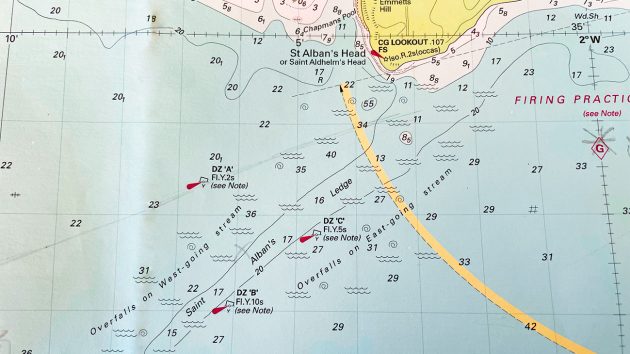
1 – Study paper charts: The paper chart clearly shows the overfalls with a warning of where to expect them and when.
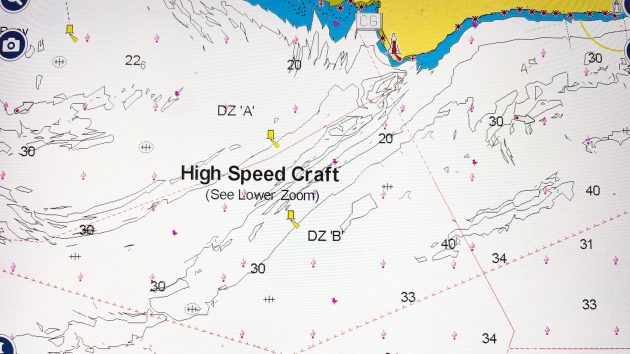
2 – Be wary of digital charts: On this digital version it’s not as easy to spot the overfalls or find out when to expect them
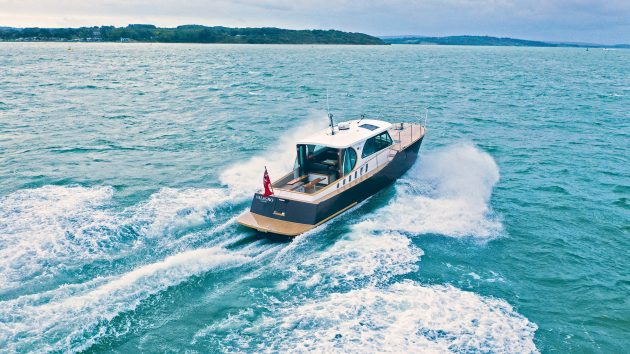
3 – Against the waves: When travelling against the direction of the waves, it helps to trim the bow down so the finer section can cut through them and reduce slamming.

4 – With the waves: When travelling with the waves it pays to raise the bow by removing all trim and using the throttle, so the boat can travel comfortably at speed over any waves it catches up.
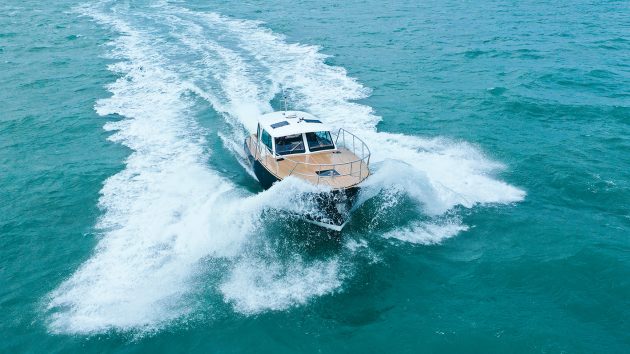
5 – Adjust your speed: Here the boat has slowed down, allowing the bow to ‘stuff’ into the back of the wave it is trying to overtake. The solution is either to speed up and raise the bow or travel even slower.

6 – Tacking across the waves: Sometimes it pays to take the waves at an angle rather than running directly into them. By tacking one way then the other, it may allow for a faster, drier ride.




